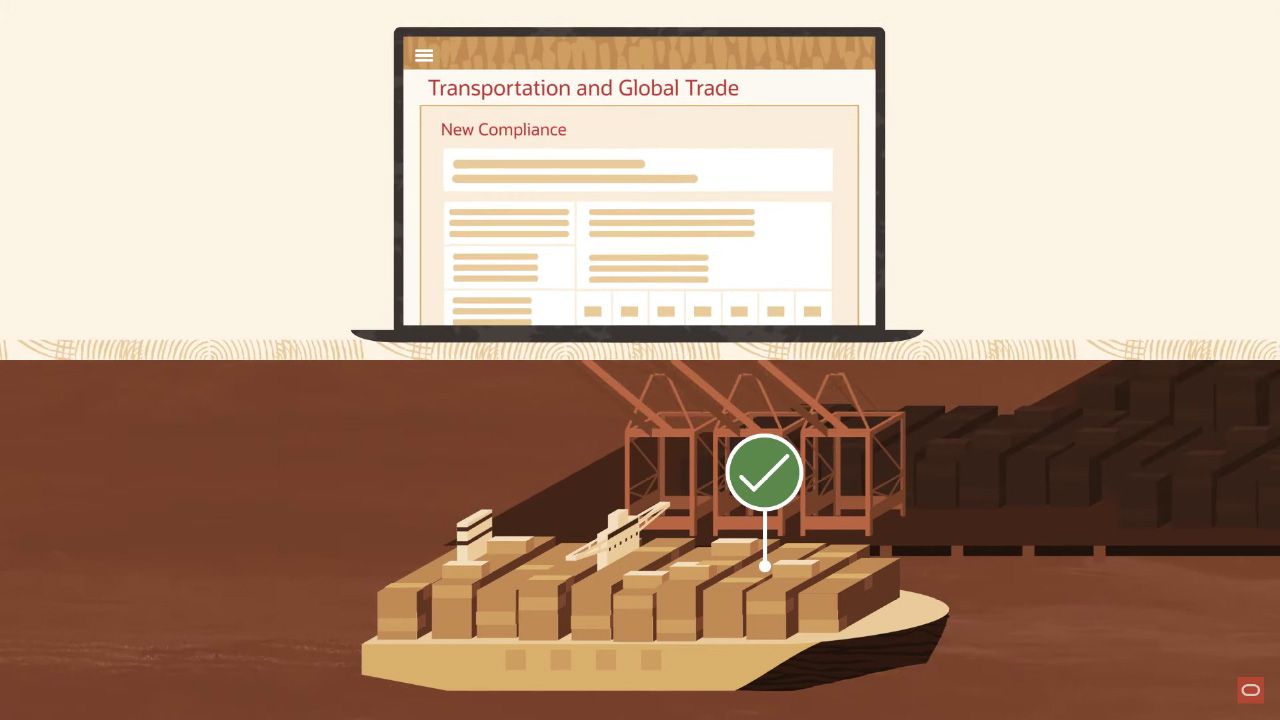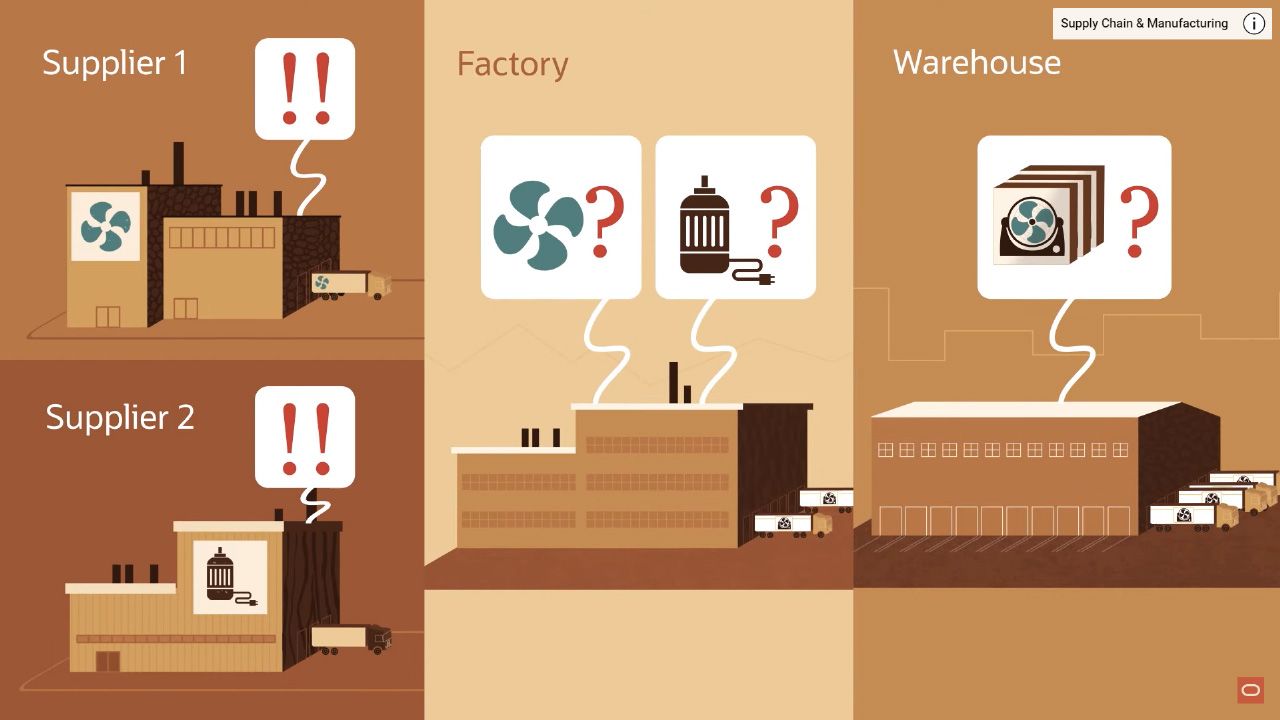
Solutions
Oracle Fusion SCM - Manufacturing
Oracle Fusion SCM is a comprehensive suite of cloud applications that covers the entire supply chain management (SCM) lifecycle, from planning and procurement to manufacturing and fulfillment. Oracle Manufacturing Cloud is a key component of Oracle Fusion SCM that empowers manufacturing engineers with web-based interface tools to build a foundation of manufacturing plant data and design the discrete and process manufacturing processes for items.
In this article, we will explore the main features and benefits of Oracle Manufacturing Cloud, and how it can help you run your shop floor more efficiently. We will also look at some examples of how Oracle Manufacturing Cloud integrates with other cloud applications, such as IoT Production Monitoring, Manufacturing Analytics, and Quality Management.
Overview of Oracle Manufacturing Cloud

Oracle Manufacturing Cloud enables you to design and manage production processes for both discrete and process manufacturing. You can create work definitions that specify the operations, resources, materials, and outputs required to produce an item. You can also create work orders that execute the work definitions and track the progress and status of production activities.
Oracle Manufacturing Cloud supports mixed-mode manufacturing, which means you can execute both discrete and process manufacturing in the same plant, the same work center, or even the same item. For example, you can produce a batch of raw material using process manufacturing, and then use it as an input for a discrete assembly operation.
Oracle Manufacturing Cloud also supports contract manufacturing, which allows you to outsource some or all of your production activities to external suppliers. You can create supplier operations in your work definitions and work orders, and monitor the status and quality of the supplier deliverables.
Some of the key benefits of Oracle Manufacturing Cloud are:
- It provides a web-based interface that is easy to use and accessible from any device.
- It leverages the power of Oracle Cloud Infrastructure to deliver high performance, scalability, security, and reliability.
- It integrates seamlessly with other Oracle Fusion SCM applications, such as Inventory Management, Cost Management, Order Management, Planning Central, Product Development, Product Hub, Quality Management, and Maintenance.
- It leverages the capabilities of Oracle IoT Production Monitoring Cloud to capture and analyze data from your factory floor using IoT devices. You can use IoT Production Monitoring to monitor the performance and health of your machines, equipment, and workers, and get real-time alerts and insights to optimize your production efficiency.
- It leverages the capabilities of Oracle Fusion SCM Analytics to provide you with timely insights into your work order performance, shop floor efficiency, and plan-to-production processes. You can use Manufacturing Analytics to measure key performance indicators (KPIs), such as cycle time, throughput, yield, scrap rate, downtime, utilization, and OEE (overall equipment effectiveness).
- It leverages the capabilities of Oracle Quality Management Cloud to help you ensure the quality of your products and processes. You can use Quality Management to define quality plans, specifications, tests, inspections, and actions for your items and operations. You can also use Quality Management to collect quality data from various sources, such as IoT devices, barcode scanners, mobile apps, or manual entry. You can then analyze the quality data and take corrective actions to prevent defects and improve customer satisfaction.
How to design production processes with Oracle Manufacturing Cloud

To design production processes with Oracle Manufacturing Cloud, you need to perform the following steps:
- Define your manufacturing plant data. This includes creating manufacturing plants, resources (such as machines or workers), work centers (groups of resources that perform similar functions), standard operations (common tasks that can be reused across work definitions), calendars (specifying working days and shifts), and exceptions (specifying non-working days or periods).
- Define your production process design. This includes creating work definitions that specify the operations (such as assembly or painting), resources (such as machines or workers), materials (such as components or ingredients), outputs (such as finished goods or by-products), scrap factors (percentage of material loss during production), lead times (duration of each operation), routing logic (sequence of operations), lot size rules (minimum or maximum quantity of items produced in a batch), scaling factors (multipliers for material quantities or resource usage based on output quantity), supplier operations (operations performed by external suppliers), electronic signatures (approval requirements for work definition changes), electronic records (audit trail for work definition changes), and version control (tracking of work definition revisions).
- Define your production execution parameters. This includes creating production calendars (specifying working days and shifts for each plant or work center), resource calendars (specifying working days and shifts for each resource), shift exceptions (specifying non-working days or periods for each shift), resource exceptions (specifying non-working days or periods for each resource), resource availability rules (specifying when a resource is available or unavailable for production), resource substitution rules (specifying alternative resources that can perform the same operation), and material substitution rules (specifying alternative materials that can be used as inputs or outputs).
How to manage production with Oracle Manufacturing Cloud

To manage production with Oracle Manufacturing Cloud, you need to perform the following steps:
- Create work orders. You can create work orders manually or automatically from various sources, such as sales orders, planning recommendations, inventory replenishment, or configured items. You can also create work orders for contract manufacturing, where some or all of the operations are performed by external suppliers. You can specify the work definition, quantity, priority, due date, status, and other attributes for each work order. You can also reserve materials and resources for each work order to ensure availability and prevent overallocation.
- Execute work orders. You can execute work orders using the infolet-based work execution work area, which provides a user-friendly interface to perform various production activities, such as starting, completing, pausing, resuming, or canceling operations; reporting material transactions; reporting resource usage; reporting output quantities; reporting scrap quantities; reporting serial numbers; scaling process work orders; printing labels; and viewing attachments. You can also execute work orders using barcode scanners or mobile devices to capture production data in real time.
- Monitor work order performance. You can monitor work order performance using the work order dashboard, which provides a graphical view of the status, progress, and issues of your work orders. You can also monitor work order performance using IoT Production Monitoring Cloud, which provides real-time visibility into the performance and health of your machines, equipment, and workers. You can also monitor work order performance using Manufacturing Analytics, which provides historical and predictive insights into your work order KPIs, such as cycle time, throughput, yield, scrap rate, downtime, utilization, and OEE.
- Manage work order quality. You can manage work order quality using Quality Management Cloud, which helps you ensure the quality of your products and processes. You can define quality plans, specifications, tests, inspections, and actions for your items and operations. You can also collect quality data from various sources, such as IoT devices, barcode scanners, mobile apps, or manual entry. You can then analyze the quality data and take corrective actions to prevent defects and improve customer satisfaction.
- Close work orders. You can close work orders when they are completed or canceled. You can also close work orders automatically based on predefined criteria, such as status or due date. Closing work orders triggers various actions, such as updating inventory balances, generating cost transactions, updating planning data, updating supplier invoices, and generating accounting entries.
